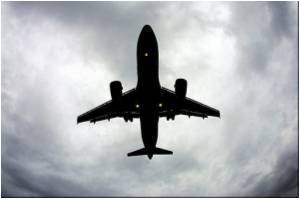For an Iranian, obtaining a visa to visit the United States usually requires two costly trips to Dubai or Turkey.

The Havin-2 is no ordinary vehicle. Solar powered, its 4.5 metre (15 feet) carbon fibre chassis resembles a giant door. The four wheels that lurk beneath its sprawling white body are the only clue it is a car at all.
As entrants to the American Solar Challenge, a 1,700 mile (2,735 kilometre) road trip in July across seven US states from Austin, Texas to Minneapolis, Minnesota, a lot is at stake for the young Iranians.
But the sad reality is that the Havin-2 may never reach the start line.
"We are really worried about it," says Mohammad Saadatmand, the mechanical leader of the team from Qazvin Azad Islamic University, west of Tehran.
"To think that we might not make it is almost too terrible to contemplate."
Advertisement
Standing in their path are the sanctions imposed on Iran by the United States and other world powers as punishment for a nuclear programme that many believe masks an intention to develop an atomic bomb.
Advertisement
- 'Researchers, not terrorists' -
The Iranian team is confident it can hold its own against the mostly American field, which includes the illustrious Massachusetts Institute of Technology (MIT). The question is whether they will get the chance.
"This car has made us crazy," says Alireza Malmali, the team's electronics specialist who has now switched his attention to trying to find an air carrier.
Giving a tour at the team's spartan workshop, where the Havin-2 lurks under a tarpaulin, the prospect of being barred is writ large across his face.
"I wish governments across the world would accept we are researchers, not terrorists," he says.
The cargo arms of Qatar Airways, Turkish Airlines and Lufthansa all refused to carry the Havin-2, citing fears of breaching sanctions.
- Sanctions at heart of problems -
Several other companies set impractical conditions for carriage.
A letter from the US Treasury Department appears to confirm that the car does not require special authorisation if is being used "in a public conference, performance, exhibition or similar event".
The solar challenge organisers, however, were unable to navigate the regulations.
"It has been very difficult," says Sue Eudaly, the event's team coordinator. "We went to a senator, who directed us to the State Department who then sent us to the Office of Foreign Assets Control. Ultimately, I guess we were not a high priority case."
Last ditch negotiations with a Tehran-based carrier are now under way.
Even then, a delivery date no later than July 1, which the carrier is reluctant to guarantee, leaves less than two weeks for the Havin-2 to clear customs in time for the start of the race.
The costs of sending the team and the car to America mean only 12 of the 18 students involved, all of whom have obtained visas, will travel.
- An ideal testing ground -
Located 160 kilometres (100 miles) from the capital, Qazvin has 300 days of sunshine a year. Good roads stretch for miles across a largely barren desert landscape.
To ensure a level playing field in the United States, all teams will rely on 516 photovoltaic panels, or solar cells, made in America and patched together in Germany.
But each entrant has developed their own Maximum Power Point Tracking (MPPT) system, which connects inverters, battery chargers and other devices to optimise the car's performance.
The skill and key to winning is understanding the course and detecting the angles of the sun's rays during a day's racing, starting at 9am and ending at 6pm, with each team using four drivers.
The Havin-2 reached a top speed of 110 kilometres per hour (70 mph) during testing, but the team believes it is capable of 160 kilometres per hour in competition.
Beyond the solar challenge's aim of promoting clean energy, a sense of national pride is also palpable among Saadatmand and Malmali, who both took part in the same event in Australia three years ago.
"We want to show we are good, maybe even better than the rest of the world," Malmali says.
Source-AFP











